Table of contents:







- What Is Content Duplication?
- Is Duplicate Content Bad for SEO?
- What Are the Reasons for Duplicate Content?
- How to Check for Content Duplication?
- How to Fix Duplicate Content Issues?
- Duplicate Content and SEO – The Takeaway
What Is Content Duplication?
Long story short: duplicate content means that the same text appears on a few different websites or in a few different places on one website. It is usually associated with plagiarism or copying content from someone else, however, it can also occur in other situations. It’s possible to distinguish two types of duplicate content - external and internal. In the first case, the same pieces of content can be found outside of your website. In the latter, the problem occurs on your page (for example, there is the same article on a few subpages). Many e-commerce sites face the problem of internal duplicate content. Although owners of online stores boast unique descriptions, they seem to forget that they shouldn’t add the same description to a few product pages (e.g., different color versions). Both in the case of internal and external duplicate content, the problem is caused either intentionally or as a result of neglecting some technical issues. It’s important to mention that regardless of the reasons, duplicate content has a negative impact on SEO.Is Duplicate Content Bad for SEO?
As it’s been already mentioned, both internal and external duplicate content doesn’t support SEO and it decreases website visibility in the search results. The Panda algorithm introduced in February 2011 is used to detect duplicate content and reward websites with unique and valuable texts. Thanks to it, pages that are a quality source of information are ranked higher in the search results.
How to write quality content? Find out in our article - SEO Friendly Content
This means that websites that don’t have valuable content and include lots of duplicate content aren’t ranked high in the SERPs. Moreover, Google may perceive them as manipulation that aims to deceive end users.
As a result, positions of such websites in the search results may be decreased or they can even be indexed out.
What Are the Reasons for Duplicate Content?
According to Google, duplicate content typically results from oversights or a lack of knowledge of website owners. So, what are the reasons for external and internal duplicate content?External Content Duplication
1. Copying Descriptions from a Different Website
If other websites copy your content or if you copy content directly from them, we deal with external duplicate content. Imagine that you run a dropshipping store and you take some product information directly from other websites (e.g., manufacturers’ sites). As you may guess, many entrepreneurs who are supplied by the same manufacturers act the same way and use the same content which leads to external duplication.
2. Duplicating Content from Different Websites
Sellers and website owners who realize that content should be reliable, frequently decide to copy it from trustworthy platforms and websites like Wikipedia. However, instead of supporting SEO and improving your website positions, it can bring the opposite effect, as such websites usually have really high parameters and are therefore ranked higher than the pages with copied content. It doesn’t come as a surprise that Google wants to show users content that’s best suited for them and unique. Copying and pasting texts from other websites won’t do the job in this case.3. Publishing the Same Content on Various Channels
If you publish the same product, service, or company descriptions on various platforms like Amazon or Facebook, you’ll also need to face the negative consequences of external duplicate content. Keep in mind that paid articles or guest blog posts shouldn’t include the same exact information as your website content. Otherwise, your external duplicate content will increase.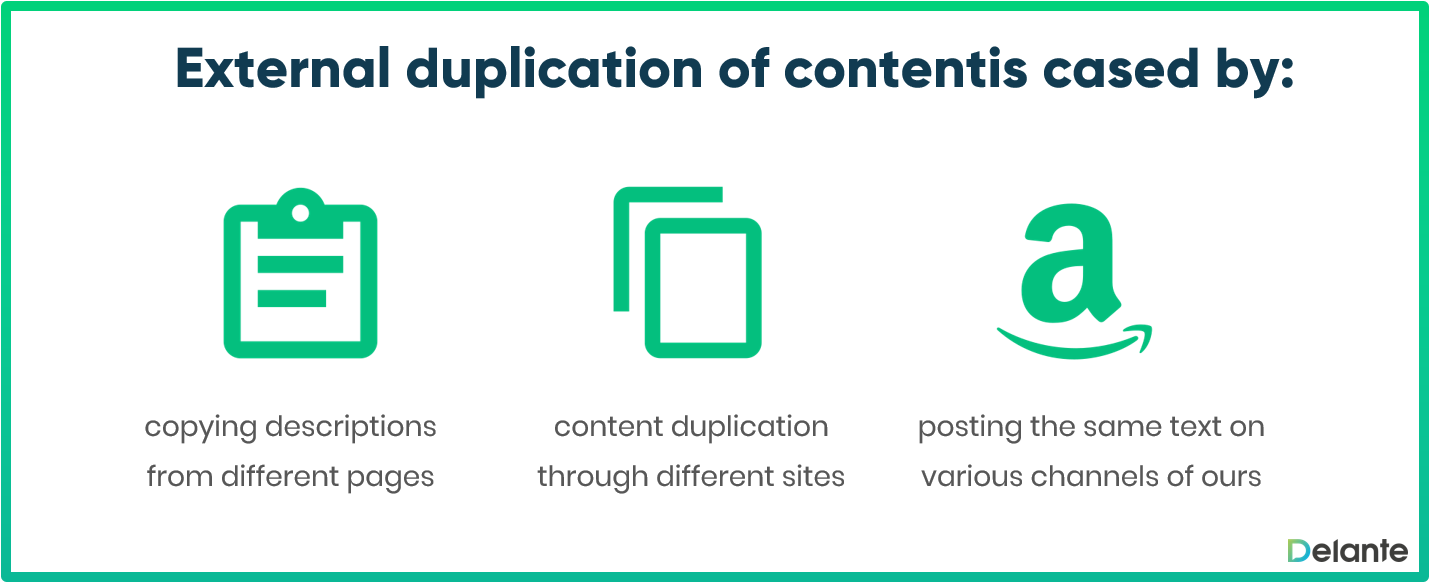
Internal Content Duplication
1. Identical Category and Product Descriptions
Identical categories and product descriptions are a real problem in e-commerce. We realize that it’s beyond the bounds of possibility to come up with unique descriptions for each product if you offer tens or hundreds of similar versions that practically don’t differ. Fortunately, thanks to technical optimization it’s possible to deal with it. Keep in mind that internal duplicate content may also be caused by filters, parameters, and blocks of the same content published on subsequent subpages (terms and conditions, footers).2. The Main Page is Available Under Several Addresses
If our home page is available under several different addresses, this may be one of the reasons for internal duplicate content. So, if your home page URLs look like these:- http://www.website-address.com
- http://website-address.com
- http://www.website-address.com/index.html or
- http://website-address.com/index.html,
3. Wrong Redirect After Implementing SSL Certificate
If your website isn’t redirected properly from http to https while implementing an SSL certificate, you can expect that search engines will see two pages with the same content. Solution? Before implementing the SSL certificate, double-check all the elements to avoid potential mistakes.
To learn more, read our article: What is an SSL certificate and how does it work?
4. Wrong Language Versions
Incorrect language versions of the site may be another reason for internal duplicate content. This happens when the site isn’t completely translated and, for example, an English language version of a Spanish store has English descriptions, but the product names are still in Spanish. If you want to avoid internal duplicate content, make sure that all your website elements are translated correctly.5. Duplicate Title and Meta Description Tags
Sometimes websites have duplicate meta tags which are also evaluated negatively by Google. If you want to help search engine robots analyze your subpages correctly, you need to ensure that the title elements are different for each subpage. Although meta descriptions are less important, they still should be unique. Copying and pasting them can have a negative impact on your website position. Therefore, it’s worth taking your time to create quality pieces of content.
Want to learn more? Check out our entry: Meta tags – what are they and how do they affect SEO?
6. Unoptimized Pagination
Pagination may also become a content duplication problem. It means dividing content into pieces and placing it on subsequent subpages in order to help users read and browse the text. Importantly, it also allows search engine robots to easily index websites. If it’s not done properly, the same descriptions, title tags, and products appear on each subpage which leads to internal duplicate content. That’s why it’s so important to create separate descriptions, and titles, as well as to tag appropriate subpages in Google Search Console.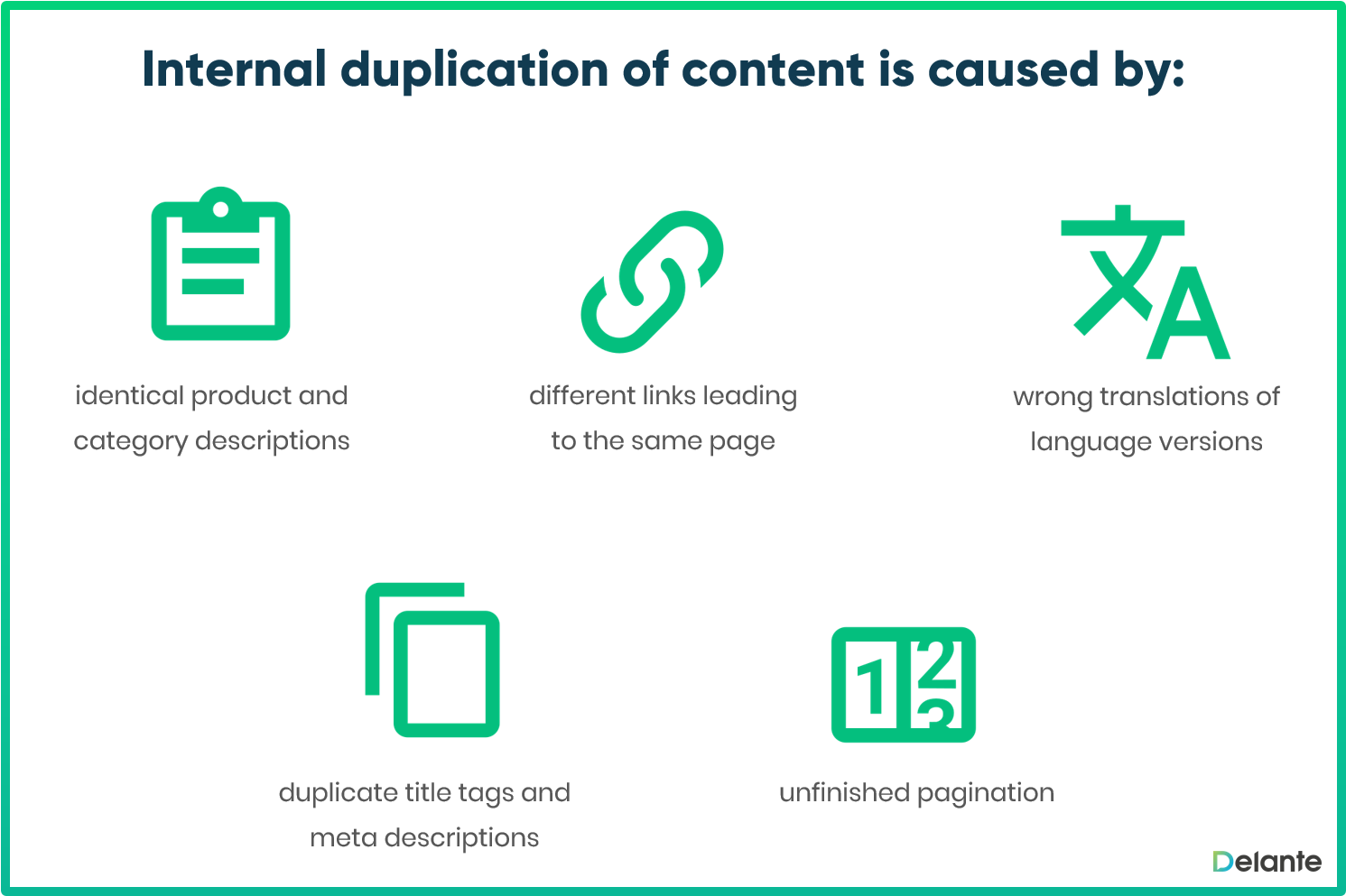
How to Check for Content Duplication?
Since you know what duplicate content is, it’s time to learn how to check your website for content duplication. For this purpose, you may use a variety of free and paid tools such as:1. Google
Checking your website for duplicate content in Google is an easy and free way. Just copy around ten words from your page and paste them with quotes into the search bar. In a perfect world, you should be able to see only your own page in the search results. If it’s not the case, it means that you’re dealing with duplicate content. Browse several subpages of your website and repeat the process.2. Copyscape
This free tool is incredibly helpful when writing texts. With Copyscape, you can easily compare your fresh content with texts that have been already published on other websites. The tool marks duplicate pieces and gives you an idea of what should be modified to make your articles or descriptions unique.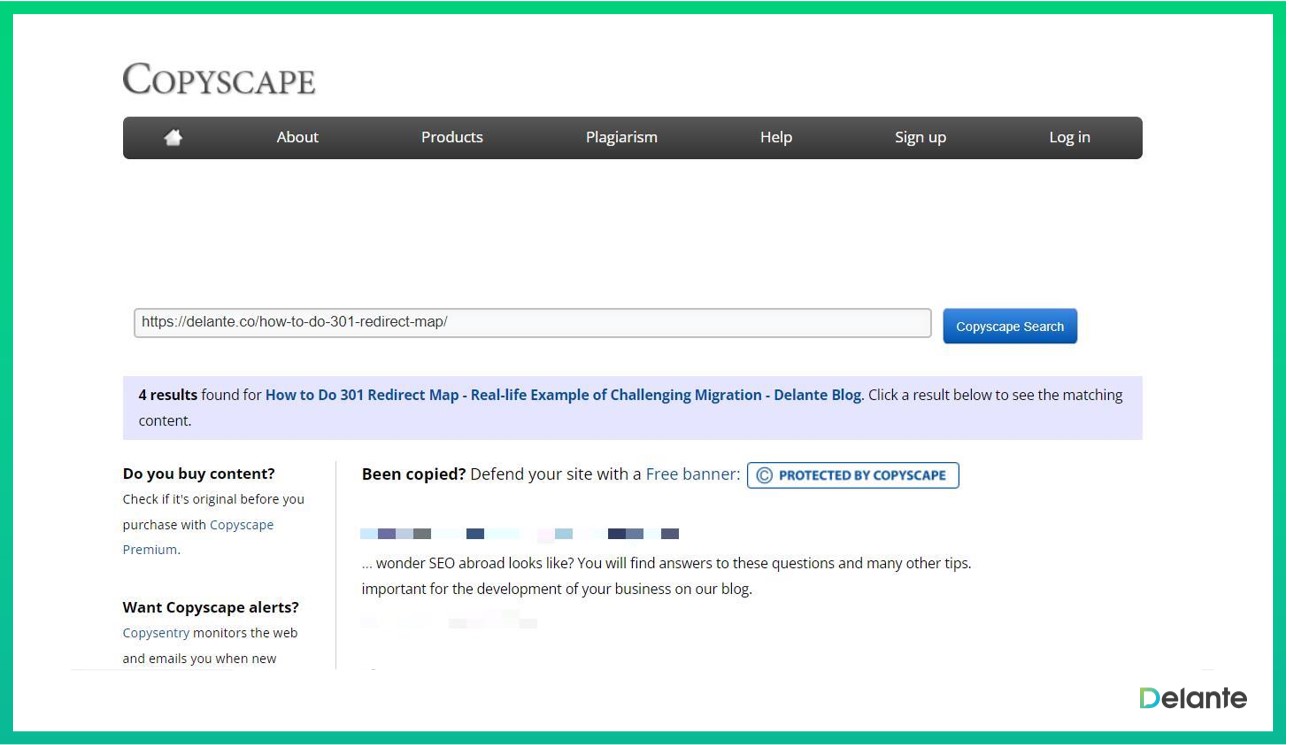
3. Siteliner
With the Siteliner tool, you can check your website for duplicate content every month. It also informs you about broken links and subpages that are the most important for search engine robots.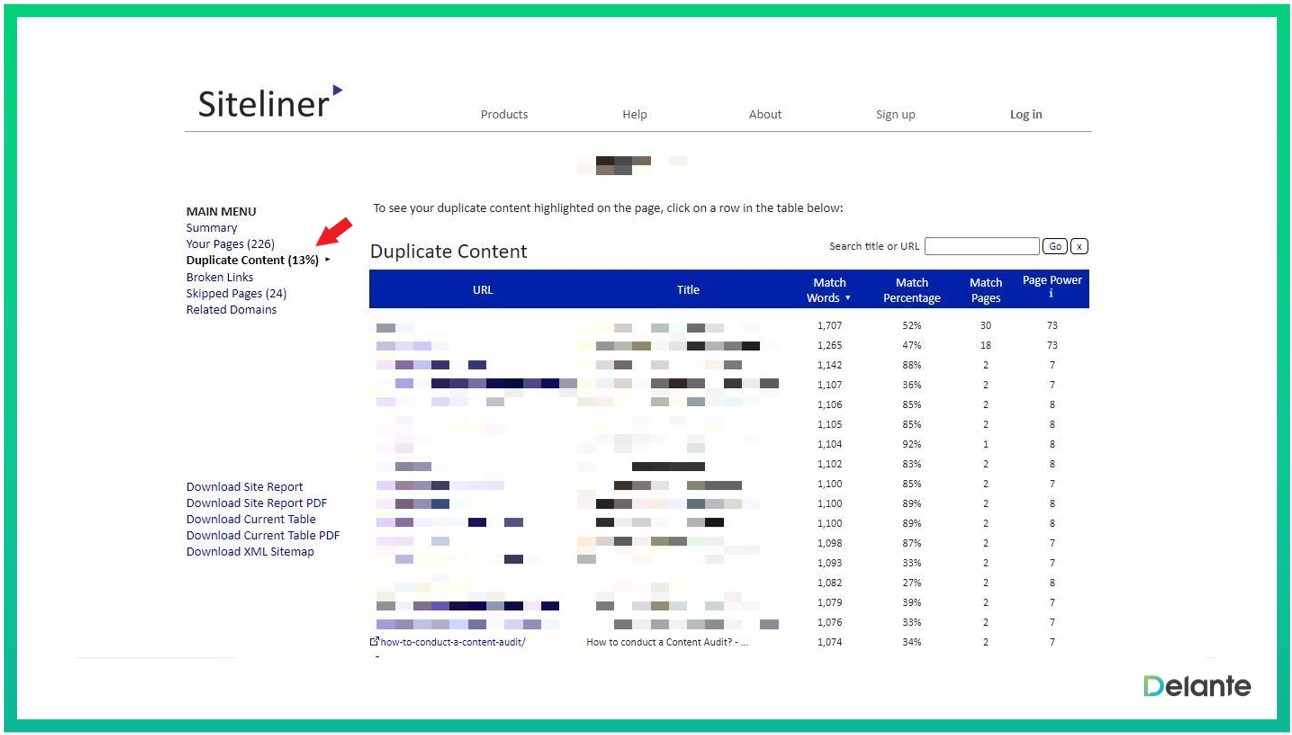
4. Ahrefs
Ahref's Site Audit functionality and Duplicates Report give you access to visually attractive graphs that show duplicate content on your website. Thanks to it, you can find out whether the problem is caused by title tags, meta descriptions, H1 headers, or the content itself. Then, you can take appropriate steps such as deleting duplicate elements, modifying tags, setting redirects, or using the noindex tag to solve the issue.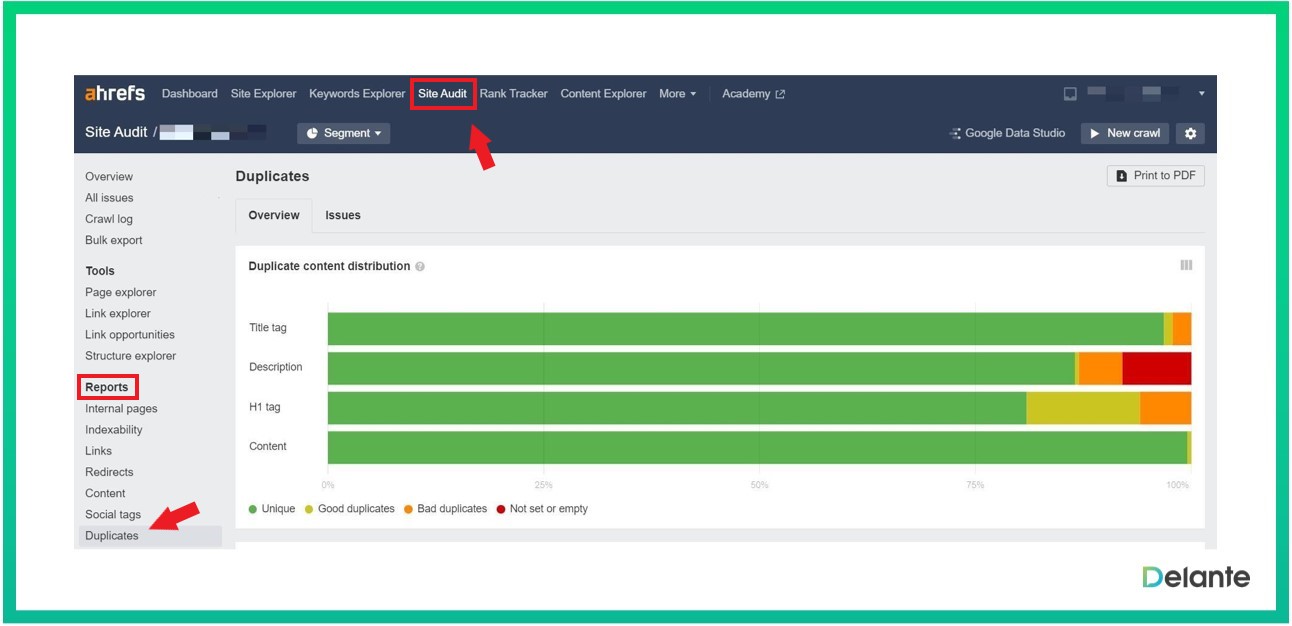
5. Screaming Frog
Screaming Frog is a paid tool that quickly gives you access to valuable information about exact and near-duplicate subpages, meta tags, as well as headers. Although the tool finds subpages with a 90% similarity match, you can also adjust the scale to your individual needs.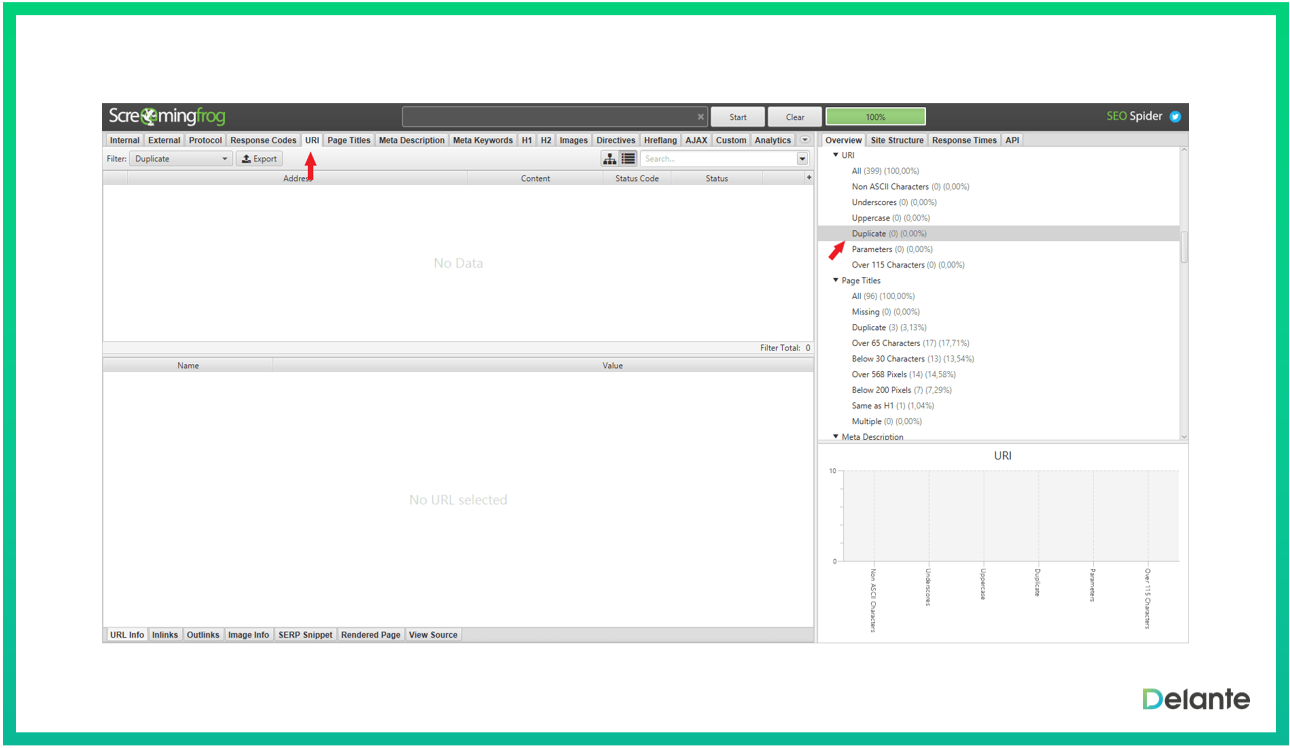


![How to Create an Ad That Will STAND Out? + [VIDEO]](jpg/how-to-create-ads-that-stand-out.jpg)









